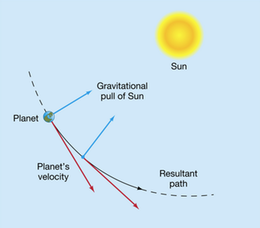Falling Around The Truth
I often come across subtle disdain for “intuitive” thinking, as opposed to higher abstract symbolic thinking. I habitually annoy my colleagues by interrupting them with demands for simple examples and analogies. A mathematician friend, bless his heart, had to explain a statistical function four different ways before I understood it.
Intuitive thinking has limits but it's not strictly inferior. Jargon is a wonderful tool, but to talk in Jargon is to think in Jargon, which eventually makes you both hard to understand and unaware of it. It's good to put down the nailgun for a while and swing a hammer. I think people need an intuitive grasp of math and science, not just names for things. The function (stdev(x) / avg(x)) is variously known as the Noise to Signal Ratio, the Coefficient of Variation, the Variation Coefficient, the Unitized Risk, the Relative Standard Deviation or, if you are in a hurry, Sigma. Got it?
When I was a kid I was profoundly frustrated by how spaceships orbit the planet. Or rather, how the trick was explained. You've seen it: a drawing of a satellite next to the earth, or the earth next to the sun, with a big circular arrow. See? It falls around the planet! QED.

Nonsense. Nothing in normal experience falls around anything. Things fall straight down and then often break, like your mom's coffee mug. But falls around? What does that even mean? There was something there but I just couldn't wrap my mind around it.
Understanding came unexpectedly. On a boring afternoon I was playing with some ceramic magnets. After repeated demonstrations of Newton's Law against the floor, these magnets had shattered. But, being magnets, the chips tended to attract each other. I had clumps of magnet chips in different sizes.
I started playing with how the little chips moved. How close could you get before it suddenly flew to a bigger piece? Then I started dropping a chip from different heights while holding the larger piece near the path it fell along.
Wouldn't you know it, the chip didn't fall straight down. It wiggled a little, perturbed by the magnetic field it passed through. Put the larger magnet too close and the chip would curve sideways to crash onto the surface of my little planet. Put it a bit farther away (or drop the chip from higher up), and the chip would whip underneath and fly off across the room. A magnet catapult!
Nearly every time those were the three outcomes. But every once in a while, if you got the speed and position juuuust right, you could make the chip fly a complete orbit around the larger magnet. That happened maybe two times.
I was ten years old but it seemed to me like a pretty good analog of how those damned spaceships stay up there, and why it's so hard to do. I felt like I finally understood it in a deep and personal way. I had taught myself something hard.
It's difficult to predict what will click with people. Maybe everyone else understands “falls around”. I don't know. Maybe reading this story helps explain it better, or maybe you'll find a video, or do the experiment yourself.
Trying to understand things in multiple ways, even simple things, isn't beside the point, it is the point. Looking for the “real” reason why something works, sans Jargon, helps you make connections. It also makes you a better explainer by first explaining things to yourself. Sometimes you need two vectors of thought, at right angles and finely balanced, to keep you from crashing or flying off into space.
Through the wonder of the internet you don't even need the magnets (though I'll take any excuse to buy magnets). Check out this orbit simulator. Typing in numbers is less physically intuitive, but it's a start.